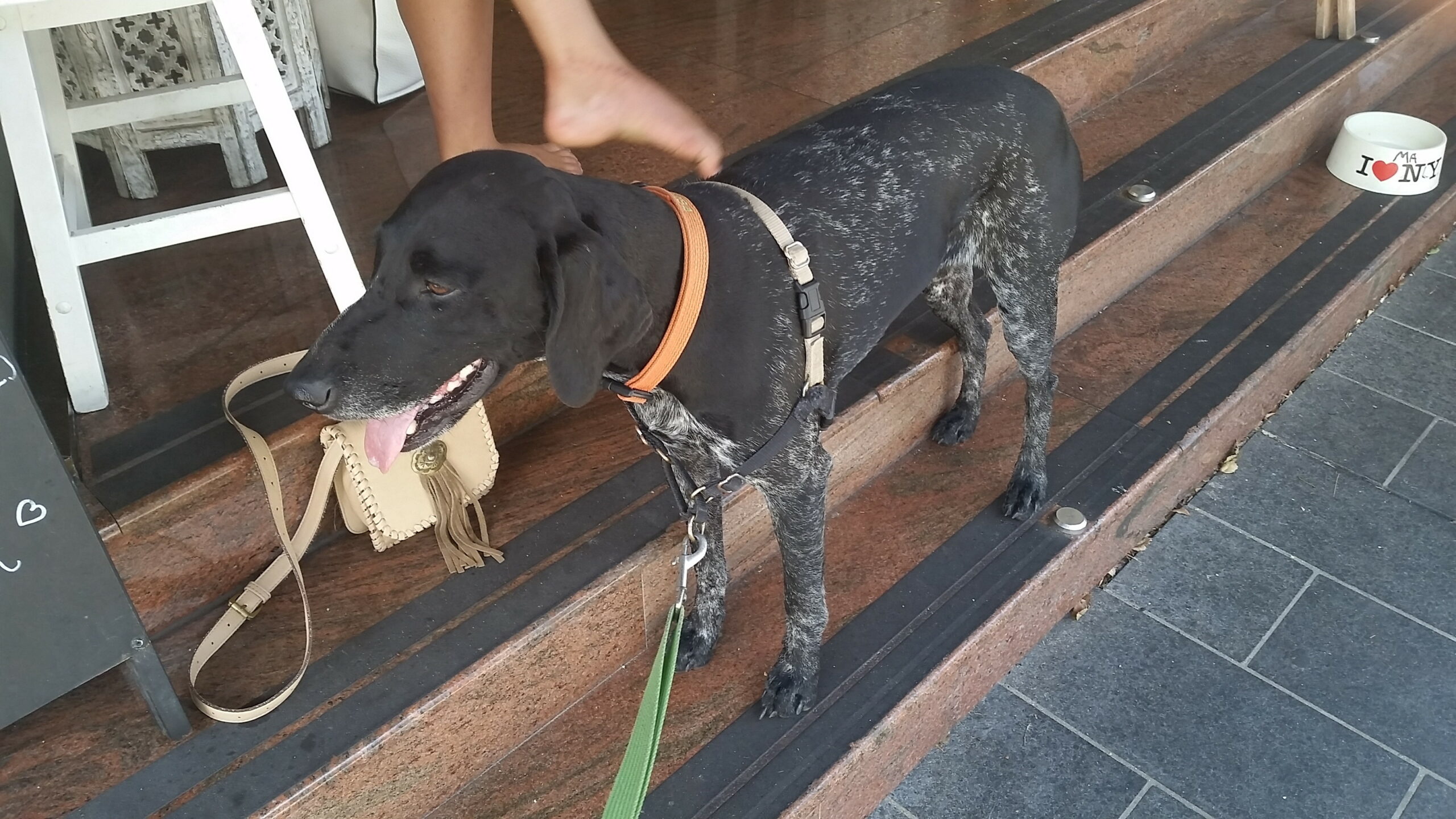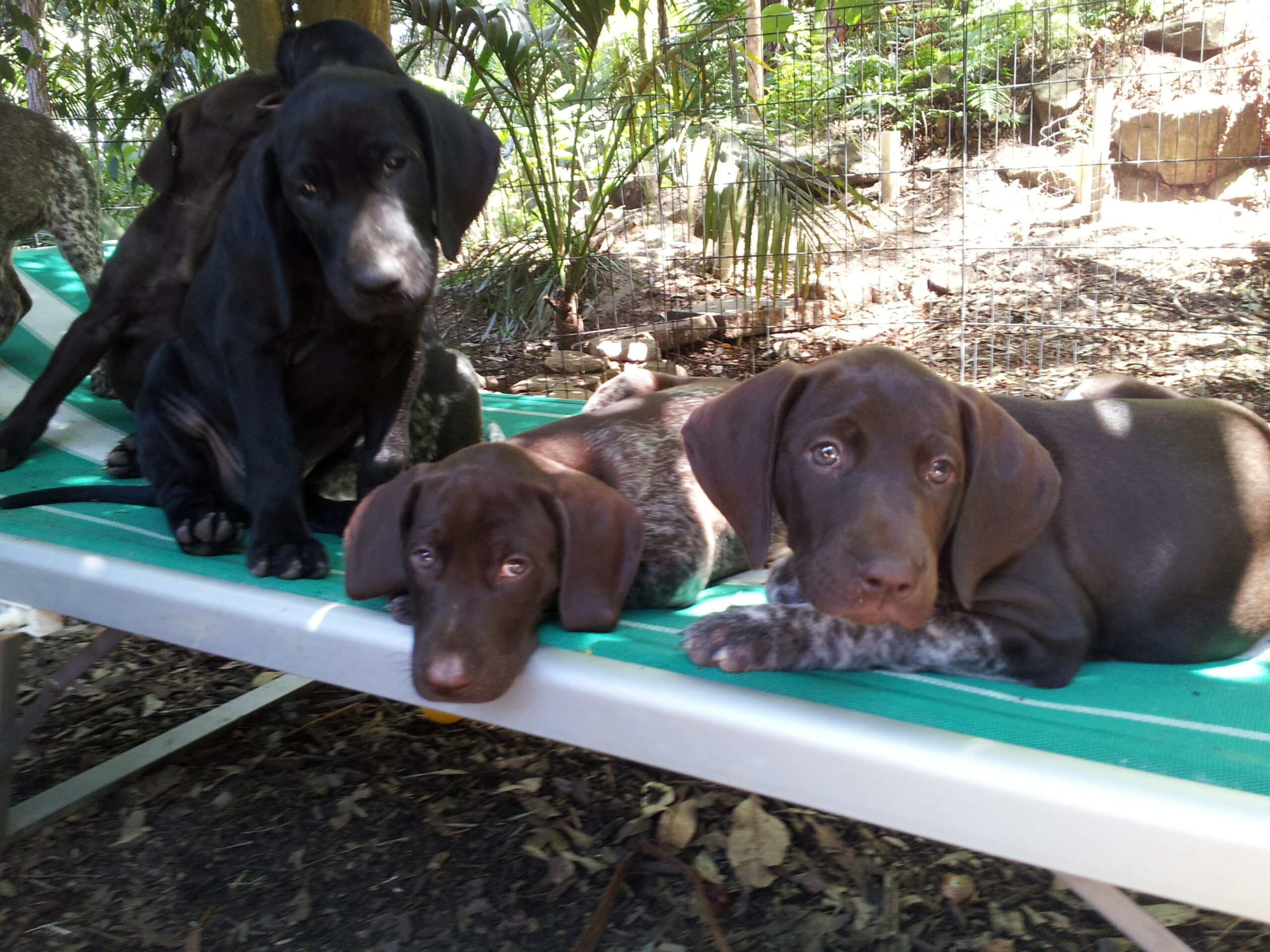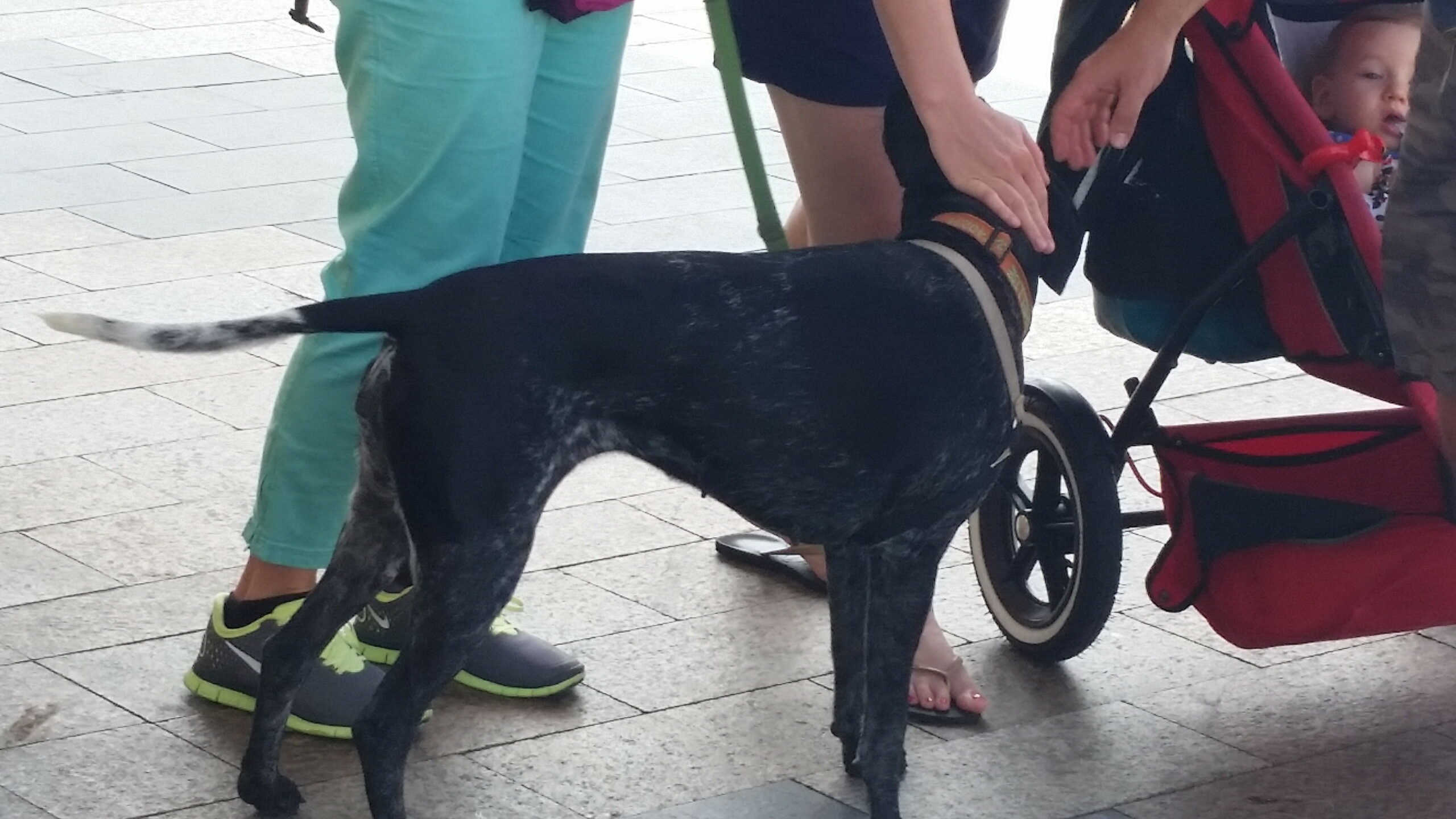Barks Blog
Jekyll and Hyde – Social off Leash but Reactive on Leash?
It might be a coincidence but over the last few weeks I have met a lot of dogs who are reactive on leash. They bark, lunge, whine and pull towards other dogs on walks. Some will aggress if given a chance and may even hurt another dog.
Leash reactivity presents in at least two forms, dogs who are reactive on leash but fine off leash and dogs who are reactive and do not get on with other dogs off leash either.

Despite the behavior looking very similar, the motivation is completely different. For dogs who do not want to interact, it is a distance increasing behavior. The behavior shown by dogs who are generally fine with other dogs is a distance decreasing behavior. These dogs are often very frustrated by the fact that they are not able/allowed to approach the other dog.
I recently met a dog who was just adopted into a family. She barked and lunged as soon as she saw another dog. There was no information available if she was okay off leash but the owners were not too keen to try as her on-leash displays looked rather scary. A first session on leash was not giving much away as the other (normally neutral) dog was not too sure about her either. This dog clearly had a communication problem. But something just did not add up and I started looking for a potential playmate. It turned out she was social but just had inappropriate manners on leash. Even for professionals it is not always clear if the behavior is distance increasing or decreasing which makes it really important to test our assumption before developing a treatment plan.
This blog focuses on dogs just like her, fine off leash but reactive on leash.
There are a lot contributing factors that make social dogs behave aggresively when on leash. It might be a learned behavior; the dog has figured out if he behaves like Cujo he will eventually be able to interact, much to the horror of the other dog. Or limited escape routes make the dog feel scared or trapped by the leash and they are not able to display appropriate body language. Barrier frustration is a build up in frustration because they are prevented from accessing the other dog and interact.
Most of these problems are caused by a misunderstanding of what dog to dog or better puppy to puppy socializations means.
Puppy to puppy socialization should facilitate three different skill sets: There are times for having a fun play with other dogs, times to just relax in the presence of other dogs and sometimes it is just a quick say hello and keep moving. All three skills should be taught in puppy pre-school.
It should be made clear from the very beginning that there is no interaction if on leash, even for cute puppies. On leash interaction or play gives the puppy the wrong information. However, as puppies love to play they also should have the opportunity to play with other puppies off leash.

Once the puppy is a bit older and walks on a leash the main contributing factor is that we make our dogs meet every other dog they see in the street (and very often head on). Yes it might be cute while the puppy is still very young but once the ‘puppy license’ has expired there will be trouble as older dogs will not put up with out of control teenage dogs in their face.
We assume this to be socialization and a proper way of meeting dogs. It is not! If dogs meet unrestrained by leashes they will do the ‘bum sniff’, use circular motion or meet sideways. A head on approach is confrontational. To make things worse we will reprimand a dog who is a bit unsure about other dogs and wants to get away or growls. This will quickly escalate and the dog might find meeting other dogs on leash scary.
These dogs have to learn that they cannot interact with every single dog they meet. But how do we teach this?
As with most problems, prevention is much better than cure. A puppy pre-school that caters to the three skill sets (fun play, relaxed company, quick hellos) can make a huge difference to how the dog will behave as an adult.
But if the dog already displays barking and lunging then we have to teach that the leash means no interaction. The environmental cue is the leash which is the distinguishing feature and a pretty clear cue to the dog. We need to teach the dog to walk on a loose leash and an attention cue to manage passing dogs. Other dogs should become a cue to go into a close (or heel) position and focus on the owner.
All these behaviors will have to be taught out of context (meaning with no other dogs nearby), once they are on cue we then start far away from other dogs so the dog remains under threshold at all times. We then very gradually decrease distance and eventually will be able to walk calmly past other dogs.
But we also need to cater for their social needs, meaning appropriate interaction and socialization with other dogs. This can either be a well run play group or day care or a good off leash area. Once the dog realizes that there are times for play, times for relaxation and times for just calmly walking past it becomes a whole lot easier and dog has now the skill set required in our modern world.


